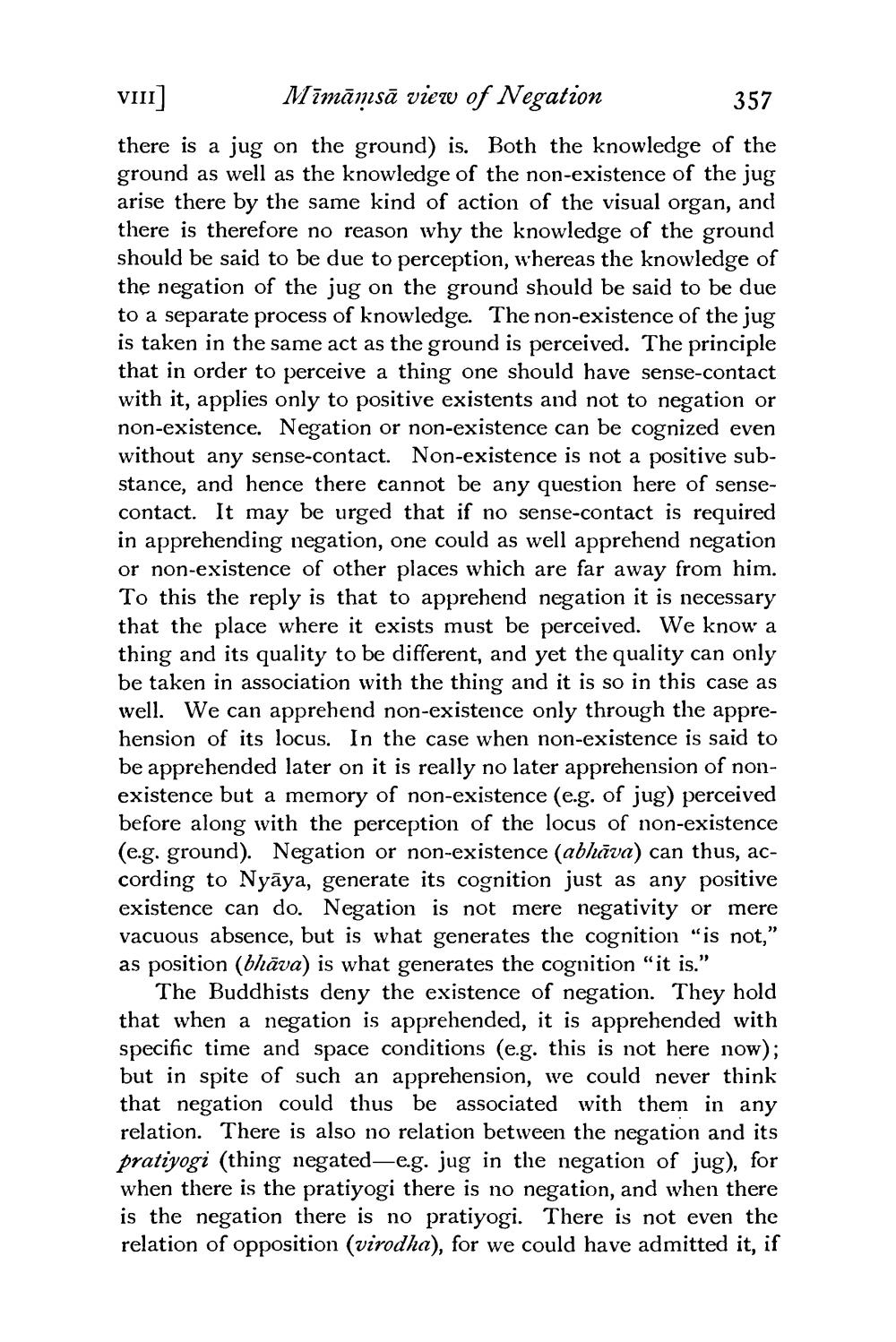________________
VIII)
Mīmāmsā view of Negation
357
there is a jug on the ground) is. Both the knowledge of the ground as well as the knowledge of the non-existence of the jug arise there by the same kind of action of the visual organ, and there is therefore no reason why the knowledge of the ground should be said to be due to perception, whereas the knowledge of the negation of the jug on the ground should be said to be due to a separate process of knowledge. The non-existence of the jug is taken in the same act as the ground is perceived. The principle that in order to perceive a thing one should have sense-con with it, applies only to positive existents and not to negation or non-existence. Negation or non-existence can be cognized even without any sense-contact. Non-existence is not a positive substance, and hence there cannot be any question here of sensecontact. It may be urged that if no sense-contact is required in apprehending negation, one could as well apprehend negation or non-existence of other places which are far away from him. To this the reply is that to apprehend negation it is necessary that the place where it exists must be perceived. We know a thing and its quality to be different, and yet the quality can only be taken in association with the thing and it is so in this case as well. We can apprehend non-existence only through the apprehension of its locus. In the case when non-existence is said to be apprehended later on it is really no later apprehension of nonexistence but a memory of non-existence (e.g. of jug) perceived before along with the perception of the locus of non-existence (e.g. ground). Negation or non-existence (abhāva) can thus, according to Nyāya, generate its cognition just as any positive existence can do. Negation is not mere negativity or mere vacuous absence, but is what generates the cognition "is not," as position (bhāva) is what generates the cognition "it is."
The Buddhists deny the existence of negation. They hold that when a negation is apprehended, it is apprehended with specific time and space conditions (e.g. this is not here now); but in spite of such an apprehension, we could never think that negation could thus be associated with them in any relation. There is also no relation between the negation and its pratiyogi (thing negated—e.g. jug in the negation of jug), for when there is the pratiyogi there is no negation, and when there is the negation there is no pratiyogi. There is not even the relation of opposition (virodha), for we could have admitted it, if




